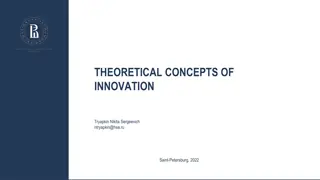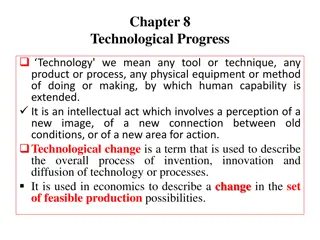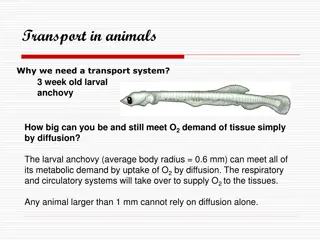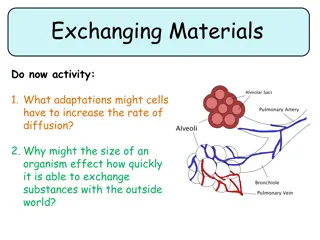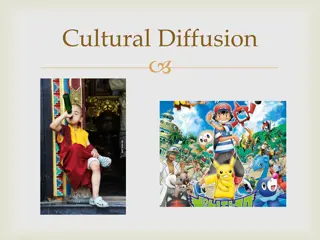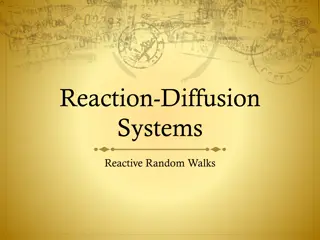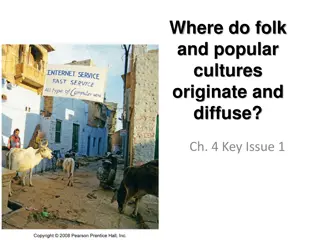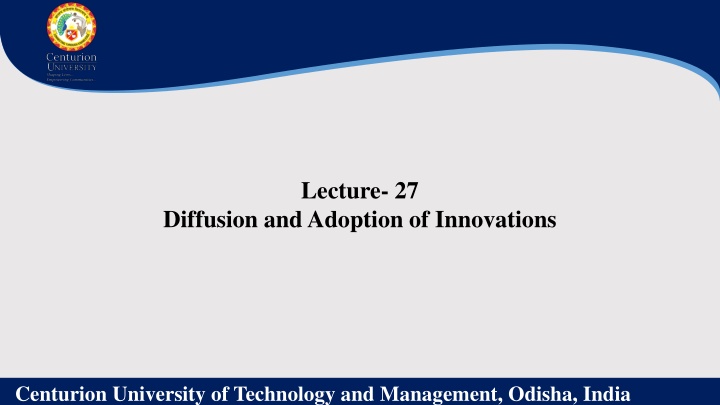
Understanding Diffusion and Adoption of Innovations
Explore the concept of diffusion as the process of communicating new ideas within a social system, alongside the four elements of innovation diffusion and characteristics of innovations. Learn about adopter categories based on innovativeness and the transition of innovations from novelty to institutionalized practices.
Download Presentation

Please find below an Image/Link to download the presentation.
The content on the website is provided AS IS for your information and personal use only. It may not be sold, licensed, or shared on other websites without obtaining consent from the author. If you encounter any issues during the download, it is possible that the publisher has removed the file from their server.
You are allowed to download the files provided on this website for personal or commercial use, subject to the condition that they are used lawfully. All files are the property of their respective owners.
The content on the website is provided AS IS for your information and personal use only. It may not be sold, licensed, or shared on other websites without obtaining consent from the author.
E N D
Presentation Transcript
Lecture- 27 Diffusion and Adoption of Innovations Centurion University of Technology and Management, Odisha, India
What is diffusion? The process by which an innovation is communicated through certain channels over time among the members of a social system. Diffusion is a special type of communication in which the messages are about a new idea. The newness of the idea gives diffusion its special character it ensures that a degree of uncertainty is involved in diffusion. Uncertainty the degree to which a range of alternatives are perceived with regard to the occurrence of an event. Uncertainty implies lack of predictability and therefore of information. Thus information becomes a means of reducing uncertainty. Any technological innovation embodies information and thus reduces uncertainty about cause-effect relationships in problem solving. Centurion University of Technology and Management, Odisha, India
Four Elements in Diffusion of Innovations: An innovation Is communicated through certain channels Over time Among members of a social system. The Innovation- An idea, practice or object that is perceived as new by an individual or other unit of adoption. Centurion University of Technology and Management, Odisha, India
Characteristics of Innovation- Relative Advantage Compatibility Complexity Trialability Observability Relative Advantage over existing technologies -can be perceived, may be measured in economic terms, social prestige, convenience and satisfaction. Compatibility with existing values, past experiences, needs of potential adopters (and their social system) Complexity -degree to which an innovation is perceived as difficult to understand and use. Centurion University of Technology and Management, Odisha, India
ADOPTER CATEGORIES There are different categories of farmers. According to Rogers (1971), the farmers based on their innovativeness can be classified as 1. Innovators (Venturesome) 2. Early adopters (Respectable) 3. Early majority (Deliberate) 4. Late majority (Skeptical) Centurion University of Technology and Management, Odisha, India
The adoption of innovation means an innovation has ceased to be innovative. It means that a method, technology, or approach to a problem has moved from the experimental edges of an organization to the core of its work: no longer a novelty, but something normal and institutionalized. Centurion University of Technology and Management, Odisha, India
1.The distribution of adopters over time closely approaches normality, and may be explained by the statistical concept of normal curve. The distribution of the adopters may be partitioned into five adopter categories by using the mean (x) and standard deviation. The area lying to the left of the mean time of adoption minus two standard deviations includes 2.5 per cent of the individuals who are the first to adopt an innovation and are known as innovators. 2. This interest leads them out of a local circle of peers and into more cosmopolite social relationships. Communication patterns and friendships among a clique of innovators are common, eventhough the geographical distance between the innovators may be great. Being an innovator has several prerequisites. These include control of substantial financial resources to absorb the understand and apply complex technical knowledge. Centurion University of Technology and Management, Odisha, India
Early Adopter: Respectable- Early adopters are a more integrated part of the local social system than are innovators. Whereas innovators are cosmopolites, early adopters are localities. This adopter s category, more than any other, has the greatest degree of opinion leadership in most social systems. Potential adopters look to early adopters for advice and information about the innovation. Early Majority: Deliberate (Local Adoption Leaders)- The early majority adopt new ideas just before the average member of a social system. The early majority interact frequently with their peers, but leadership position; are rarely held by them. The early majority's unique position; between the very early and relatively late to adopt make; them an important link in the diffusion process. Centurion University of Technology and Management, Odisha, India
Late Majority: Skeptical- The late majority adopt new ideas just after the average member of a social system. Adoption may be both an economic necessity and the answer to increasing social pressures. Innovations are approached with a skeptical and cautions air, and the late majority do not adopt until most other in their social system have done so. The weight of system norms must definitely favour the innovation before the late majority are convinced. They can be persuaded of the utility of new ideas, but the pressure of peers is necessary to motivate adoption. Laggards: Traditional- Laggards are the last to adopt an innovation. They possess almost no opinion leadership. They are the most localite in their outlook of all adopter categories, many are near isolates. The point of reference for the laggard is the past. Decisions are usually made in terms of what has been done in previous generations. Centurion University of Technology and Management, Odisha, India




